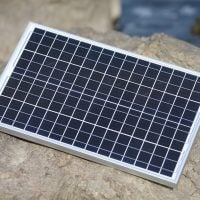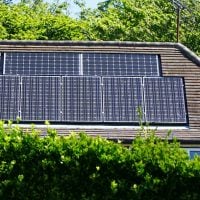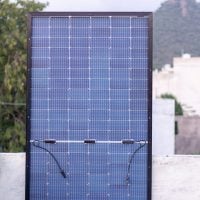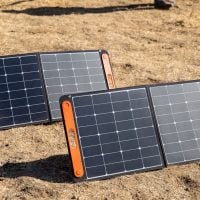In the rapidly evolving landscape of renewable energy, solar-powered solutions for small and medium-sized enterprises (SMEs) are gaining traction as viable alternatives to traditional energy sources. The importance of securing investors for these initiatives cannot be overstated. Investors not only provide the necessary capital to launch and scale solar projects but also bring valuable expertise and networks that can enhance the overall success of the venture.
For NGOs focused on promoting sustainable development, finding the right investors is crucial to ensuring that solar-powered solutions can be effectively implemented and maintained. Moreover, the global shift towards sustainability has created a favorable environment for solar energy investments. With increasing awareness of climate change and its impacts, investors are more inclined to support projects that align with their values and contribute to a greener future.
By attracting investors, NGOs can leverage financial resources to expand their reach, improve technology, and ultimately create a more significant impact in the communities they serve. This symbiotic relationship between investors and NGOs can lead to innovative solutions that not only address energy needs but also foster economic growth and social equity. Are You Working on Solar Innovation or Clean Energy Access? Join us to receive updates.
Key Takeaways
- Finding investors for solar-powered SME solutions is crucial for their success and scalability.
- Identifying the target audience for solar-powered SME solutions is essential for effective marketing and sales strategies.
- Crafting a compelling business plan for solar-powered SME solutions is necessary to attract potential investors and partners.
- Utilizing networking and connections can help in finding potential investors for solar-powered SME solutions.
- Researching and approaching venture capital firms, angel investors, and government grants can provide funding opportunities for solar-powered SME solutions.
Identifying the Target Audience for Solar-Powered SME Solutions
Identifying the target audience for solar-powered SME solutions is a critical step in ensuring the success of any initiative. The first step is to conduct thorough market research to understand the specific needs and challenges faced by SMEs in different sectors. For instance, manufacturing businesses may require substantial energy inputs, while retail operations might benefit from smaller-scale solar installations.
By segmenting the market based on industry, size, and energy consumption patterns, NGOs can tailor their offerings to meet the unique demands of each group. Additionally, understanding the demographics of potential clients is essential. Factors such as geographic location, income levels, and access to technology can influence how SMEs perceive and adopt solar solutions.
For example, businesses in rural areas may have different energy needs compared to those in urban settings. Engaging with local communities through surveys or focus groups can provide valuable insights into their attitudes towards solar energy and help NGOs design solutions that resonate with their target audience. This targeted approach not only enhances the likelihood of adoption but also fosters trust and credibility within the community.
Crafting a Compelling Business Plan for Solar-Powered SME Solutions

A well-crafted business plan serves as a roadmap for any solar-powered SME initiative, outlining the vision, mission, and operational strategies necessary for success. It should begin with a clear articulation of the problem being addressed—namely, the energy challenges faced by SMEs—and how solar solutions can provide effective answers. This section should include data-driven insights that highlight the potential benefits of solar energy, such as cost savings, reliability, and environmental impact.
Furthermore, a compelling business plan must detail the financial projections and funding requirements for the project. This includes outlining startup costs, operational expenses, and anticipated revenue streams. By presenting a realistic financial outlook, NGOs can instill confidence in potential investors regarding the viability of their solar initiatives.
Additionally, incorporating case studies or success stories from similar projects can further strengthen the business plan by demonstrating proven outcomes and scalability.
Utilizing Networking and Connections to Find Potential Investors
Networking is an invaluable tool for NGOs seeking to find investors for solar-powered SME solutions. Building relationships within the renewable energy sector can open doors to potential funding opportunities and partnerships. Attending industry conferences, workshops, and seminars allows NGO professionals to connect with like-minded individuals who share a passion for sustainability.
These events often feature panels of investors looking for innovative projects to support, providing a platform for NGOs to pitch their ideas directly. Moreover, leveraging existing connections can yield fruitful results. Engaging with board members, advisors, or other stakeholders who have experience in fundraising can provide insights into potential investors who may be interested in solar initiatives.
Personal introductions often carry more weight than cold outreach, as they come with a level of trust and credibility. By actively participating in relevant networks and communities, NGOs can increase their visibility and attract investors who are aligned with their mission.
Researching and Approaching Venture Capital Firms and Angel Investors
When it comes to securing funding for solar-powered SME solutions, venture capital firms and angel investors are often key players in the landscape. Researching these entities thoroughly is essential to identify those that have a track record of investing in renewable energy projects or social enterprises. Many venture capital firms have specific funds dedicated to sustainability initiatives, making them ideal targets for NGOs seeking investment.
Once potential investors have been identified, crafting a tailored approach is crucial. This involves understanding each investor’s priorities and investment criteria, which can often be found on their websites or through industry reports. When reaching out, NGOs should present a clear value proposition that aligns with the investor’s goals—whether that be financial returns, social impact, or environmental sustainability.
A well-prepared pitch that highlights the unique aspects of the solar initiative can capture an investor’s attention and lead to meaningful conversations about funding opportunities.
Leveraging Government Grants and Incentives for Solar-Powered SME Solutions

Government grants and incentives play a pivotal role in supporting solar-powered SME solutions. Many governments worldwide recognize the importance of renewable energy in achieving climate goals and have established programs to encourage investment in this sector. NGOs should actively research available grants at local, regional, and national levels that specifically target renewable energy projects or SMEs.
Applying for government funding often requires a detailed proposal outlining how the project aligns with governmental objectives—such as reducing carbon emissions or promoting economic development. NGOs should ensure that their applications clearly articulate the anticipated impact of their solar initiatives on both the environment and local communities. Additionally, staying informed about changing policies and new funding opportunities can provide NGOs with a competitive edge in securing financial support for their projects.
Exploring Crowdfunding and Peer-to-Peer Lending Platforms for Funding
In recent years, crowdfunding has emerged as an innovative way for NGOs to secure funding for solar-powered SME solutions. Platforms like Kickstarter or Indiegogo allow organizations to present their projects directly to potential backers who are interested in supporting sustainable initiatives. This approach not only raises funds but also builds a community of supporters who are invested in the project’s success.
Peer-to-peer lending platforms also offer an alternative funding avenue by connecting borrowers directly with individual lenders willing to fund specific projects. This model allows NGOs to bypass traditional financial institutions while reaching out to socially conscious investors who prioritize environmental sustainability. By effectively communicating the benefits of their solar initiatives on these platforms—such as cost savings for SMEs or positive environmental impacts—NGOs can attract funding while simultaneously raising awareness about renewable energy solutions.
Showcasing the Potential ROI and Environmental Impact of Solar-Powered SME Solutions
When seeking investment for solar-powered SME solutions, it is essential to showcase both the potential return on investment (ROI) and the environmental impact of these initiatives. Investors are increasingly looking for projects that not only promise financial returns but also contribute positively to society and the planet. NGOs should prepare comprehensive analyses that demonstrate how solar solutions can lead to significant cost savings over time through reduced energy bills.
Additionally, highlighting the environmental benefits—such as decreased greenhouse gas emissions or improved air quality—can resonate with investors who prioritize sustainability in their portfolios. Using data from successful case studies or pilot projects can further substantiate claims about ROI and environmental impact. By presenting a compelling narrative that intertwines financial viability with ecological responsibility, NGOs can attract investors who are eager to support transformative solar initiatives.
Demonstrating the Viability and Scalability of Solar-Powered SME Solutions
To secure funding for solar-powered SME solutions, NGOs must convincingly demonstrate both viability and scalability. Viability refers to the project’s ability to operate successfully within its intended market; this includes factors such as technology reliability, regulatory compliance, and market demand. Conducting feasibility studies or pilot programs can provide tangible evidence of how solar solutions perform in real-world settings.
Scalability is equally important; investors want assurance that successful projects can be expanded or replicated in other markets or regions. NGOs should outline clear strategies for scaling their initiatives—whether through partnerships with local businesses or by leveraging technology advancements that reduce costs over time. By presenting a robust plan that addresses both viability and scalability, NGOs can instill confidence in potential investors regarding the long-term success of their solar-powered solutions.
Seeking Mentorship and Guidance from Industry Experts and Successful Entrepreneurs
Mentorship plays a crucial role in navigating the complexities of securing funding for solar-powered SME solutions. Engaging with industry experts or successful entrepreneurs who have experience in renewable energy can provide invaluable insights into best practices and potential pitfalls. These mentors can offer guidance on refining business plans, approaching investors, or even navigating regulatory challenges.
Additionally, mentorship relationships often lead to networking opportunities that can connect NGOs with potential investors or partners within the industry. By actively seeking out mentors who share a passion for sustainability and social impact, NGOs can enhance their credibility while gaining access to resources that may otherwise be unavailable. This collaborative approach not only strengthens individual initiatives but also contributes to building a supportive ecosystem for solar-powered solutions.
Securing Funding and Establishing Long-Term Partnerships for Solar-Powered SME Solutions
Ultimately, securing funding for solar-powered SME solutions is just one part of a larger strategy focused on establishing long-term partnerships that ensure sustainability and growth. Once funding has been obtained, it is essential for NGOs to maintain open lines of communication with investors and stakeholders throughout the project lifecycle. Regular updates on progress, challenges faced, and successes achieved can foster trust and transparency.
Moreover, building partnerships with local businesses, government agencies, and community organizations can enhance project implementation while creating a network of support that extends beyond initial funding. These collaborations can lead to shared resources, knowledge exchange, and increased visibility within communities—further solidifying the NGO’s position as a leader in promoting sustainable energy solutions. In conclusion, finding investors for solar-powered SME solutions requires a multifaceted approach that encompasses understanding market dynamics, crafting compelling business plans, leveraging networks, exploring diverse funding avenues, showcasing impact potential, seeking mentorship, and establishing long-term partnerships.
By employing these strategies effectively, NGOs can secure the necessary resources to drive meaningful change while contributing to a more sustainable future for SMEs worldwide.









































